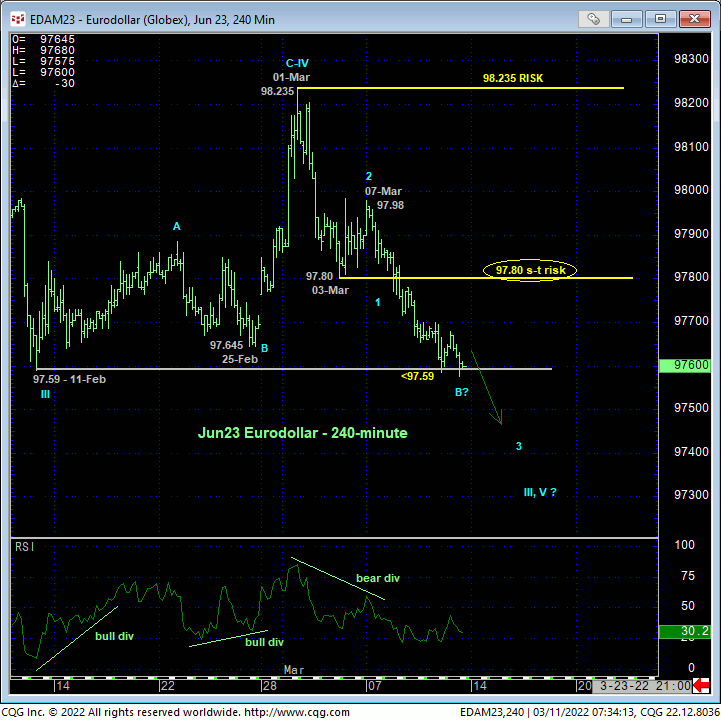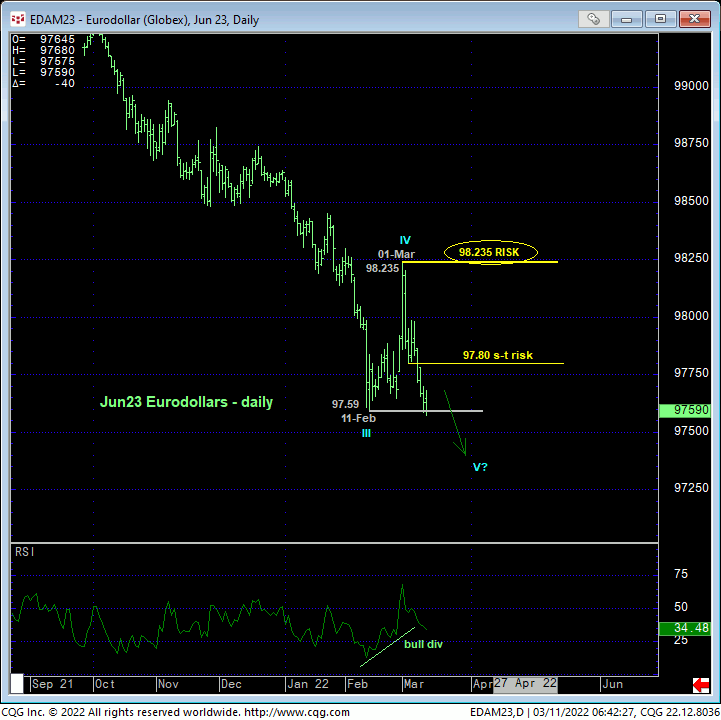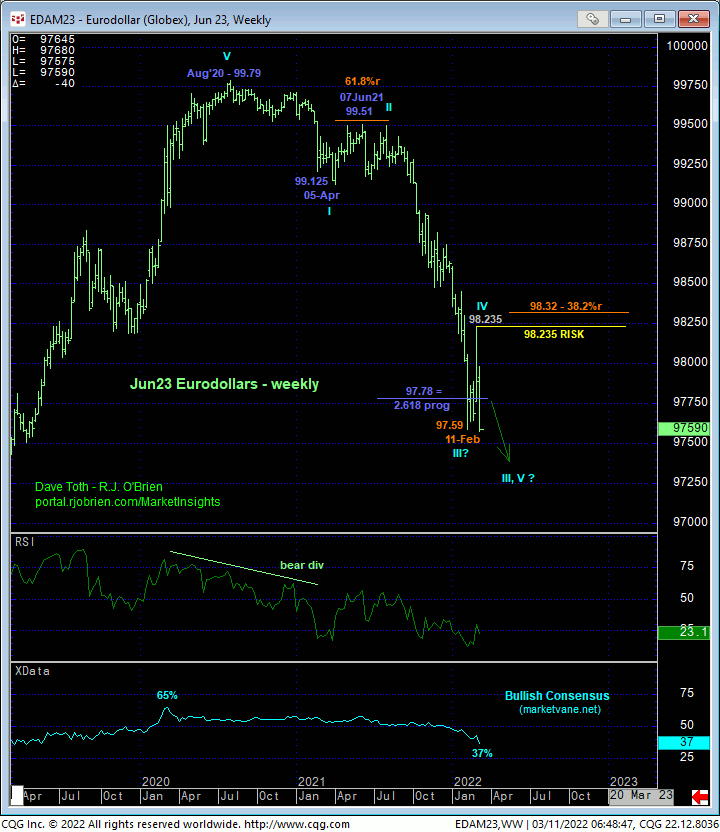
Overnight’s break below 11-Feb’s 97.59 low, while scant, nonetheless has to be taken as a resumption of the secular bear trend that dates from Aug’20’s 99.79 all-time high. This resumed slide identifies 01-Mar’s 98.235 high as the latest larger-degree corrective high and new long-term risk parameter from which longer-term institutional players can rebase and manage the risk of a resumed bearish policy and exposure. On a shorter-term basis, this week’s slide from Mon’s 97.98 high is a presumed smaller-degree 3rd-Wave of an eventual 5-wave sequence down from 98.235. A recovery above 03-Mar’s 97.80 presumed 1st-Wave of this sequence would negate its impulsive integrity and resurrect the broader correction from 11-Feb’s 97.59 low. Per such, this 97.80 level serves as our new short-term risk parameter from which shorter-term traders with tighter risk profiles can objectively rebase and manage the risk of a resumed bearish policy and exposure.


The resumption of the secular bear trend is clear in the weekly chart below following a Feb correction attempt that failed to retrace even a Fibonacci minim 38.2% of the preceding suspected 3rd-Wave plunge from Jun’21’s 99.51 high. This would seem to underscore the weakness of this market.
We’ve identified 01-Mar’s 98.235 high as the end or upper boundary of a major 4th-Wave correction, suggesting this month’s decline is the completing 5th-Wave. Until and unless the market produces some base/reversal-threat behavior, we cannot rule out by any means the even more-bearish count that suggests the major 3rd-Wave down from Jun’21’s 99.51 high is still unfolding.
These issues considered, traders are advised to return to a bearish policy and exposure at-the-market (97.60) with a recovery above 97.80 required to threaten or defer this call enough to warrant its cover. In lieu of a recovery above at least 97.80, further and possibly steep, sustained losses straight away are anticipated.


